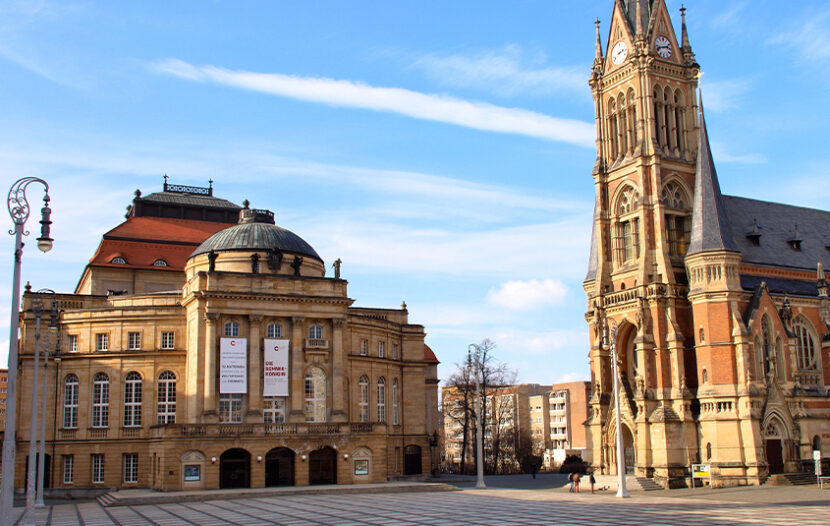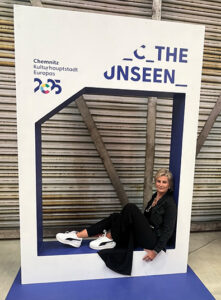
Anja Brokjans, Director, German National Tourist Office, enjoying a restful moment at GTM 2024 in Chemnitz
CHEMNITZ, Germany — The city formerly known as Karl Marx Stadt is basking in the spotlight, both for this week’s 50th edition of Germany Travel Mart, and looking ahead to 2025 as one of the three European Capitals of Culture.
Chemnitz hosted an unforgettable party Monday night as the official kick-off for Germany Travel Mart 2024.
The evening included exuberant modern dance from the Ballet Company of Theatre Chemnitz and symphonic music provided by the Young Philharmonic Orchestra Augustburg – along with cycling-powered film and a boisterous brass band.
“Germany remains competitive and is playing in the Championship League of Tourism,” proudly stated Petra Hedorfer, CEO of the German National Tourist Board.
With a strong showing in the European market and with international travellers, Germany is claiming its spot as a top tier destination. According to the Nations Brand Index, Germany is ranked first among all 27 European nations, and third worldwide because of a favourable global perception as being educational, fascinating and exciting.
Federal Government Coordinator for Culture and Tourism, Barbara Klepsch, was another proud booster at the festivities, excited for Chemnitz’s honour as the fourth German city to be European Capital of Culture. “The flagship project ‘Purple Path’ directly relates to the local saying ‘everything goes back to the mines’; building a bridge between the roots of the local people with their centuries-old heritage of mining and modern art,” said Klepsch.
STRONG VISITOR STATS
As 400 international guests from 38 countries revelled in Monday night’s celebrations, German tourism partners were excited to share 2023 stats, with 81 million overnight visitors, a 20% increase from the previous year, and a recovery rate of 88% from Canadian travellers compared to 2019.
With the motto, ‘C the Unseen’, Chemnitz is poised to welcome visitors with 100 projects and more than 1000 exhibits in 2025, including #3000Garages, a year-long commitment to transform small public spaces into community hubs for creativity and urban development. Another project is Generous Neighbours, bringing together individuals, corporations, educational institutions and other stakeholders to green their city with plantings of gardens and allotments.
The Purple Path is an art and sculpture trail connecting Chemnitz with the 38 cities of Saxony through 70 contemporary installations by international and Saxon artists, displayed in a variety of locations including Glance by Tanya Rochelmeyer at the Floha train station, The Wild Boars by Carl Emanuel Wolff in Ehrenfriedersdorf and Color Floating by Nevin Aladag over the pond in Zwonitz’s Austelpark.
Additional lures for clients to consider Germany this year include UEFA European Football Championship in June and July, exhibitions celebrating 250 years since the birth of artist Caspar David Friedrich and the commemoration of the 35th anniversary of the fall of the Berlin Wall.
Michael Holden, a Canadian travel professional based in St. John’s, Newfoundland, had nothing but praise for GTM 2024.
“For bringing Canadians to Germany, Germany Travel Mart is key to learning and to have the experts right there. It’s the perfect opportunity to engage with all of these suppliers – from Berlin to Freyburg, Chemnitz, Hamburg and Frankfurt. This is my first Germany Travel Mart and I’ve learned a lot and discovered new destinations,” he said.
GTM PRE-TOUR IN SAXONY
With 23 of the 52 UNESCO World Heritage sites found in eastern Germany, Saxony is poised to welcome many to explore its historic castles and medieval towns. The region was featured as one of GTM 2024’s pre-tours.
As the capital of Saxony, Dresden was nicknamed the ‘Jewel Box’ because of numerous Baroque and Rococo buildings in its city centre. These days it’s one of the most visited cities of Germany. Highlights include the restoration and renovation of the Frauenkirche, and the Semperoper, the ballet opera house. Both have tours showcasing the elegant and lavish details within these two buildings.
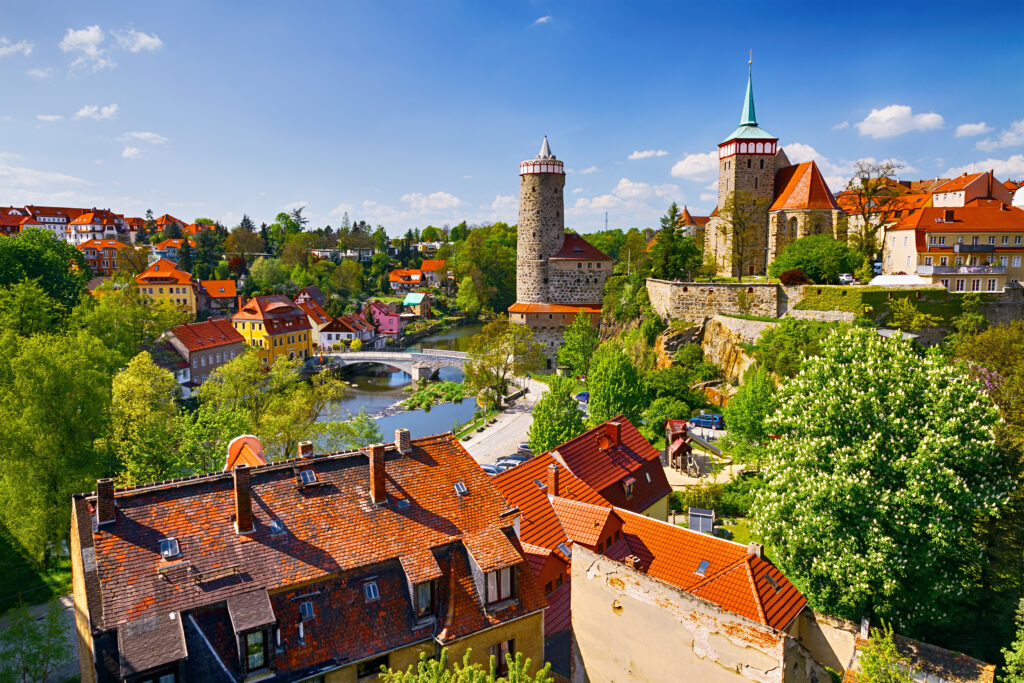
Bautzen, Germany
Newly reopened this spring in Dresden after a year-long closure is the 180-room, 31 suite Taschenberg Palais Kempinski Dresden. The hotel is steps from the church, ballet opera house, the Residenzschloss (a former Royal palace now a dedicated museum to art and science) and the Furstenzug, a 102-metre porcelain mural of the House of Wettin, depicting the Saxon kings from 1127 to 1904.
Saxony provides several options for day-tripping from Dresden, whether by car or by train. One possibility is the medieval town of Bautzen, which celebrated its 1,000-year anniversary in 2002. Known as the city of towers, there are 14 towers in the old town. Bautzen also hosts one of the oldest Christmas markets in Germany, plus it’s home to St. Peter Cathedral, the oldest and largest interdenominational church in the country. The town pride also includes Bautz’ner Senf, the most famous mustard in Germany; visitors can learn more at the Senfmuseum and taste at the Baut’zner Senfrestaurant.
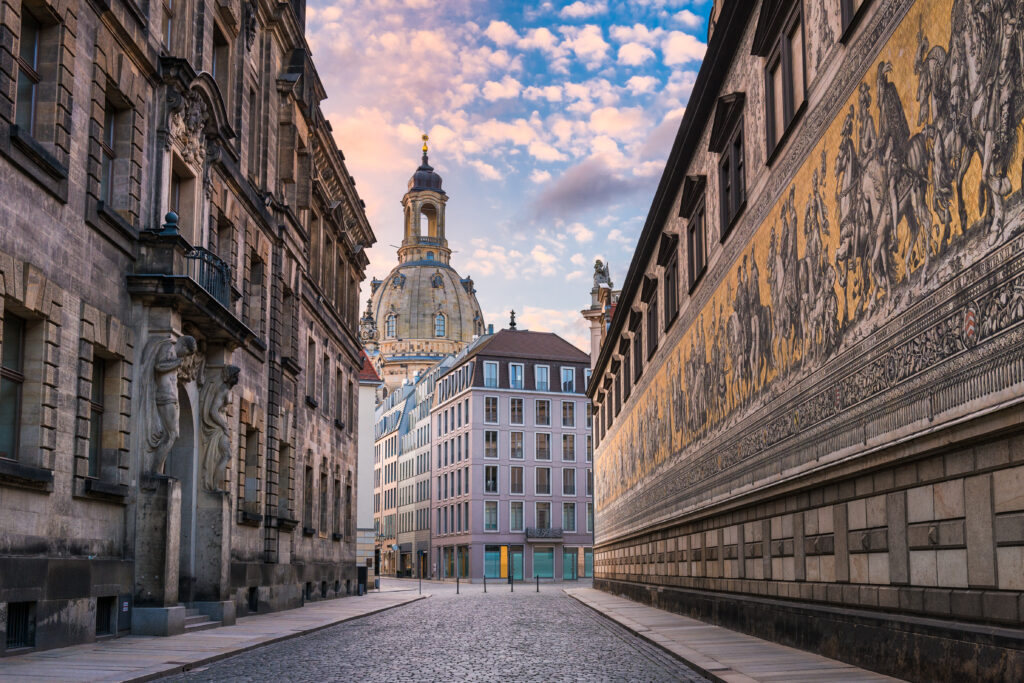
Dresden, Germany.
Kamenz, in northeast Saxony, is located on the Black Estler River and home to the Museum of Sacred Art, a former Catholic Church and monastery, and now an art gallery and Protestant Church. It’s also the birthplace of German playwright and philosopher Gotthold Ephraim Lessing, whose life is detailed within the Lessing Kamenz Museum, an hour well-spent learning about his life and writings. Newly opened is the Dada Zentrum Kamenz, a contemporary art gallery showcasing Dada works from Saxon artists.
The architecturally-rich town of Gorlitz showcases medieval, Renaissance, Gothic and Art Nouveau, thanks to a dedicated focus on restoration. This town has become a favourite of Hollywood (or Goerliwood, as locals say) with starring roles in Inglourious Basterds, The Book Thief, Around the World in 80 Days and The Grand Budapest Hotel. The Museum of History and Culture houses the eye-catching historical library hall of the Upper Lusatian Society of Sciences, while St. Peter’s Church houses the famous sun organ, and dates to 1697. And the city’s pedestrian Old Town Bridge may be new but has been connecting Gorlitz and with its sister city in Poland, Zgorzelec, since the 13th century. Visitors can easily spend an afternoon in Zgorzelec before returning to explore more Saxon history.
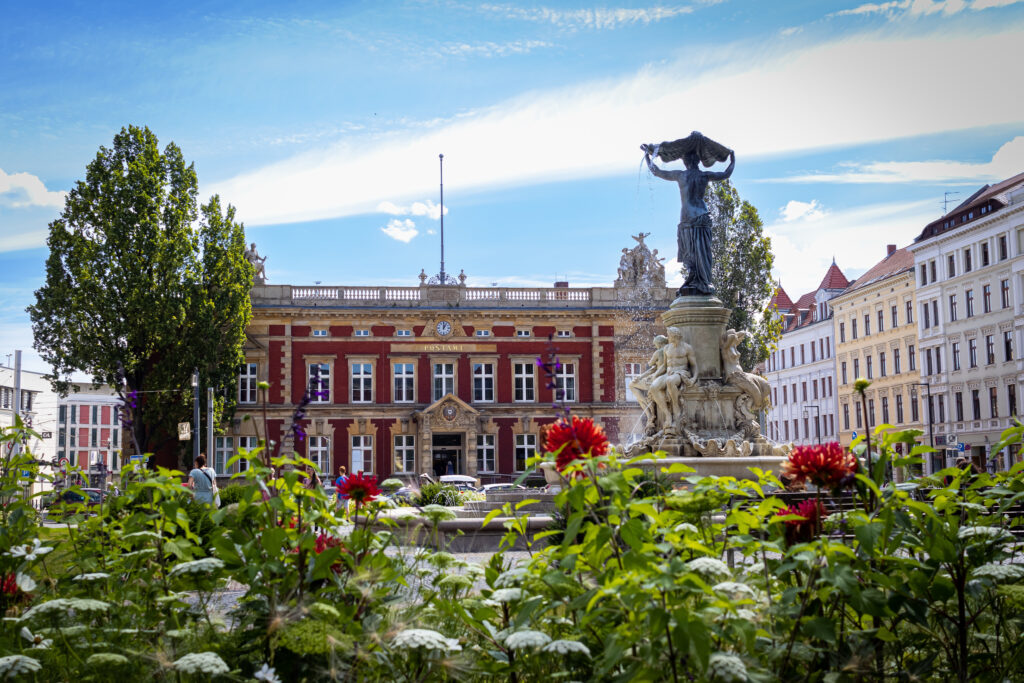
Gorlitz, Germany.
For more details check out these sites: Germany.travel; Chemnitz2025.de; Dresden.de; and VisitSaxony.com.
